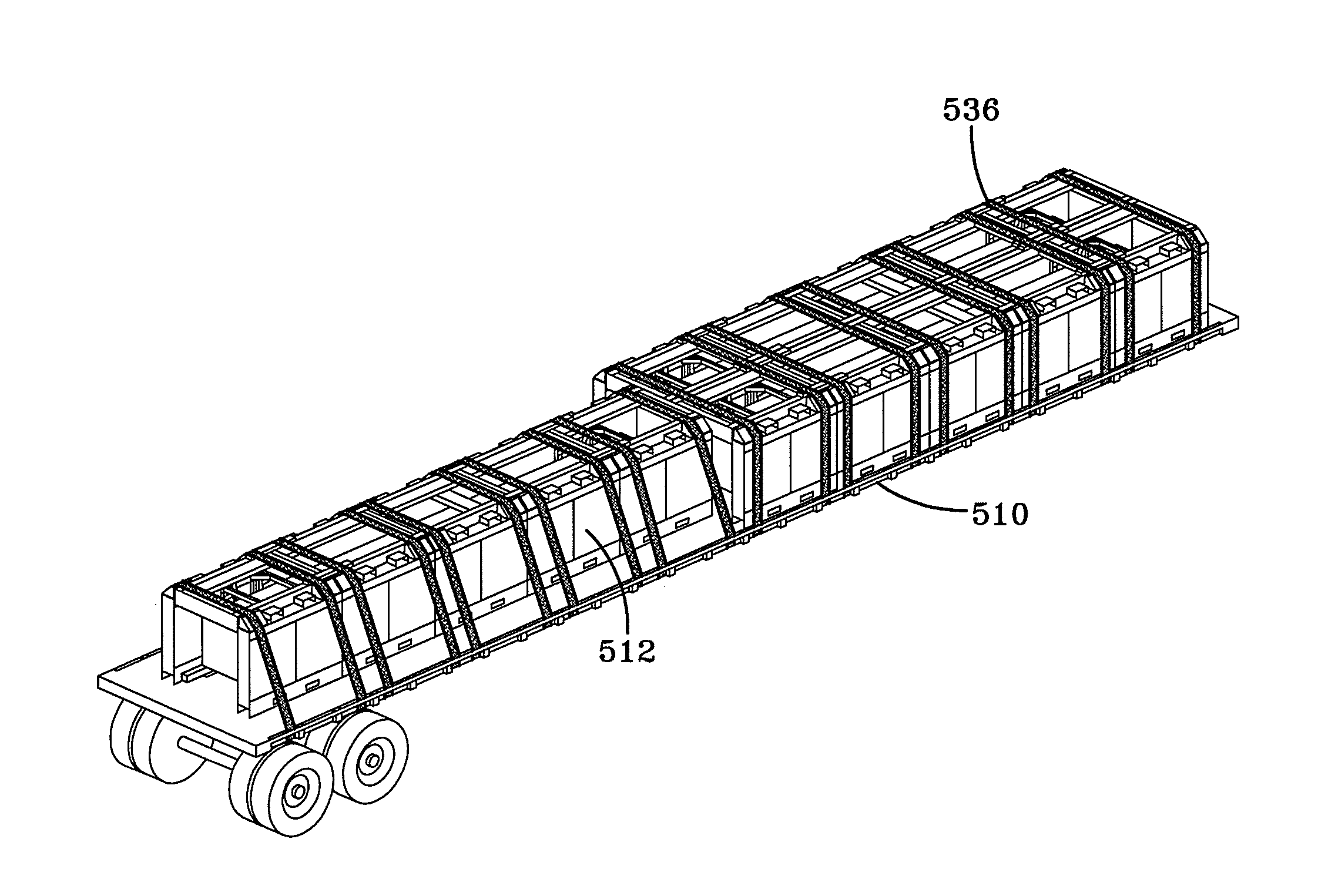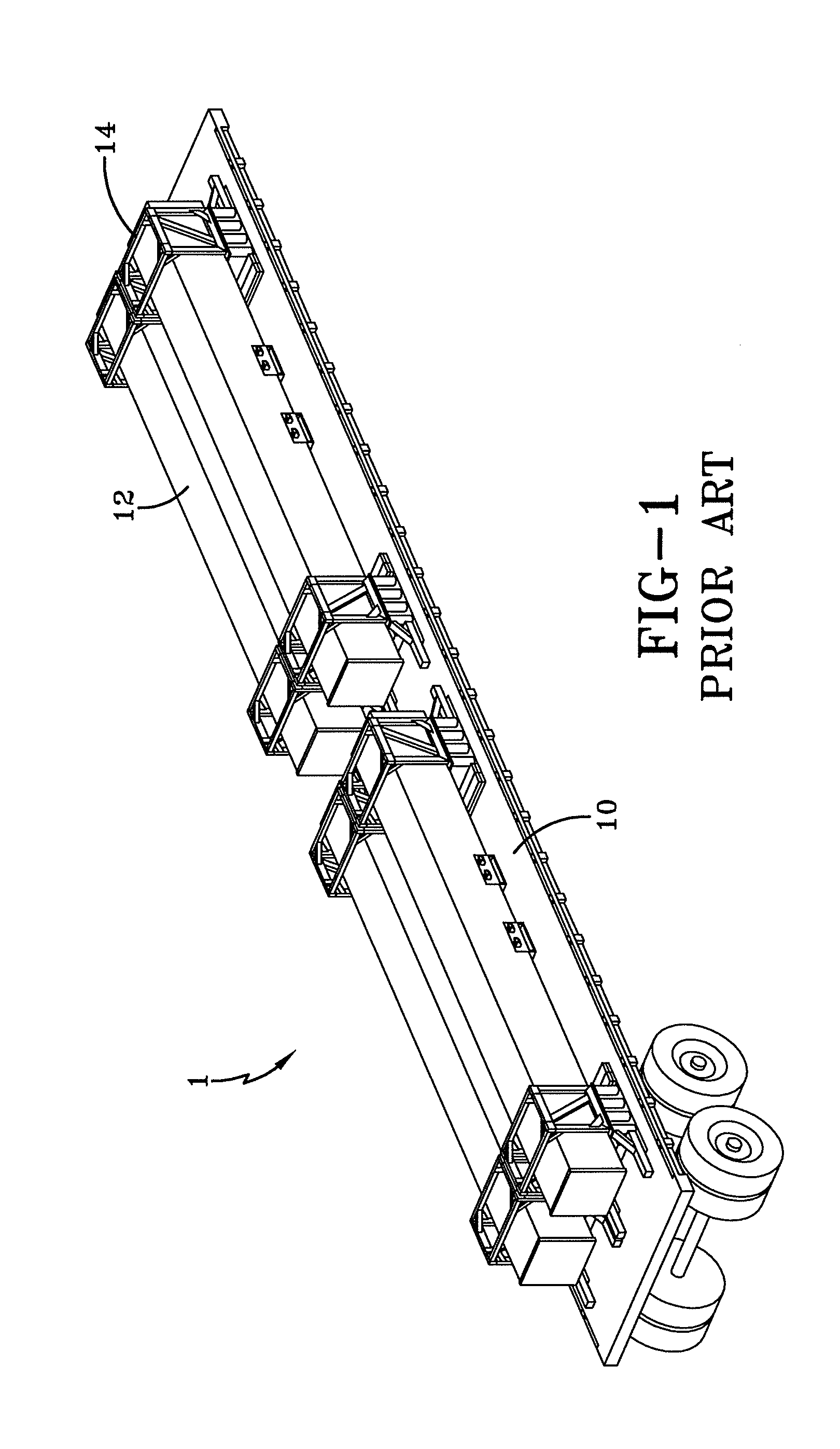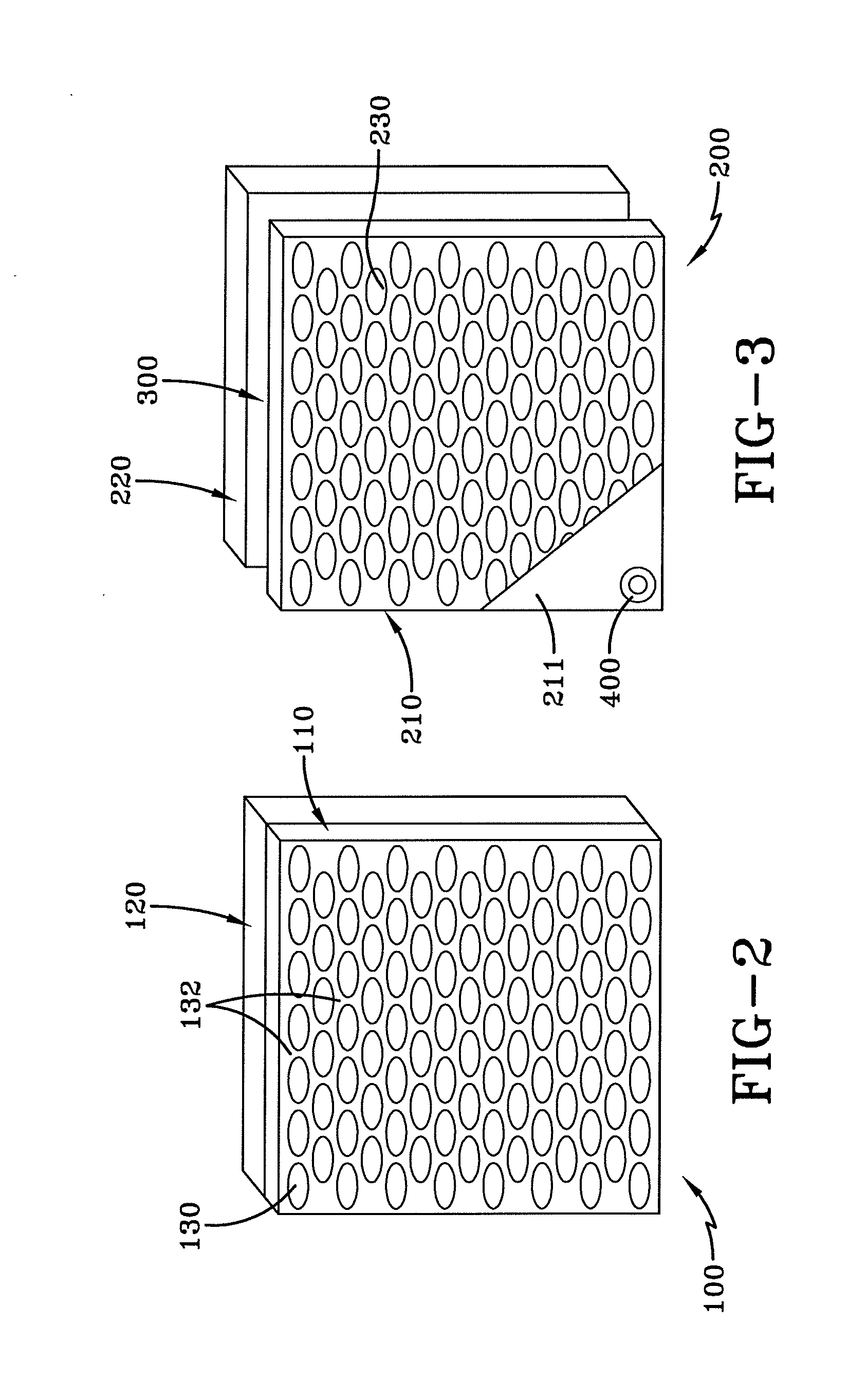Lightweight enhanced ballistic armor system
- Summary
- Abstract
- Description
- Claims
- Application Information
AI Technical Summary
Benefits of technology
Problems solved by technology
Method used
Image
Examples
example
[0118]An example of the formulation in accordance with the present invention can be as follows. It should be appreciated that the formation of the present invention is not limited to this example, but would envisions any alternatives or modifications that would be understood by one skilled in the art. A polyurethane that is made by the reaction of a multifunctional amine and a multifunctional isocyanate without the addition of a solvent is provided. More specifically, an oligomeric ether or ester with diamine functionality reacted with a diisocyanate is provided.
[0119]As discussed above, alternatively the bundle or layered composite configuration may be environmentally protected by pressing or wrapping protective layers of polypropylene or other comparable materials, such as metal, Kevlar, S-glass, and the like, around the bundle or layered composite configuration. Edges may be reinforced with glass epoxy composites or other comparable protective and / or reinforcement materials as sh...
examples
Ballistic Testing
[0133]The Ballistic Barrier Test was conducted in order to test ballistic armored panels in accordance with the present invention.
STANAG 4241-50 Caliber Bullet Impact Test
[0134]The objective of the test was to impact each candidate plate in a specified quadrant with a volley of three 50-caliber armor-piercing (AP) projectiles, fired at 100+ / −8 msec intervals from .50 caliber Mann barrel devices. The projectiles were required to have velocities of 2788+ / −66 ft. / sec. These projectiles were to impact the specified plate quadrant within a 2-in circle, without key-holing or overlapping.
Test Item Configuration
[0135]The overall general test configuration is shown in FIG. 15 and is discussed in greater detail below.
[0136]The instrumentation setup was as shown in FIG. 16. A total of four Phantom cameras were used, and are described in Table 1 below.
TABLE 1BULLET IMPACT TEST CAMERA SPECIFICATIONSFrameExposureCameraTypeRateResolutionTimePurposeAPhantom 7105,0001280 × 308 20Pro...
PUM
| Property | Measurement | Unit |
|---|---|---|
| Length | aaaaa | aaaaa |
| Fraction | aaaaa | aaaaa |
| Thickness | aaaaa | aaaaa |
Abstract
Description
Claims
Application Information
 Login to View More
Login to View More - R&D
- Intellectual Property
- Life Sciences
- Materials
- Tech Scout
- Unparalleled Data Quality
- Higher Quality Content
- 60% Fewer Hallucinations
Browse by: Latest US Patents, China's latest patents, Technical Efficacy Thesaurus, Application Domain, Technology Topic, Popular Technical Reports.
© 2025 PatSnap. All rights reserved.Legal|Privacy policy|Modern Slavery Act Transparency Statement|Sitemap|About US| Contact US: help@patsnap.com



